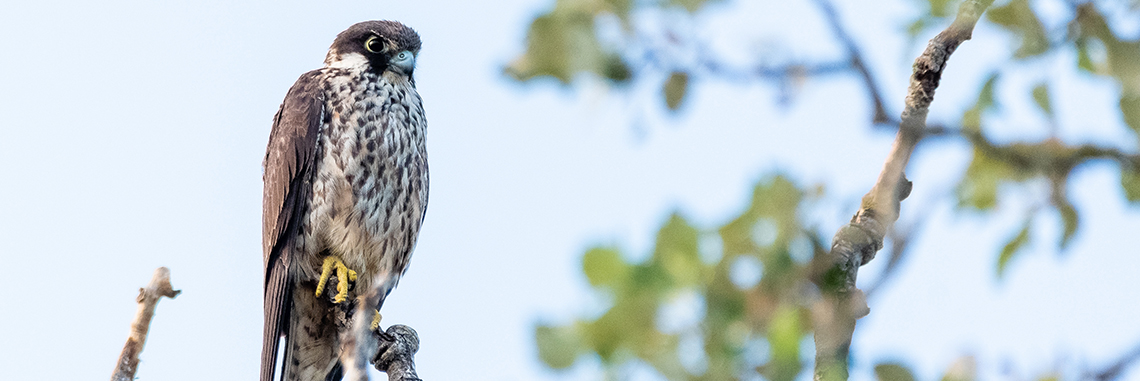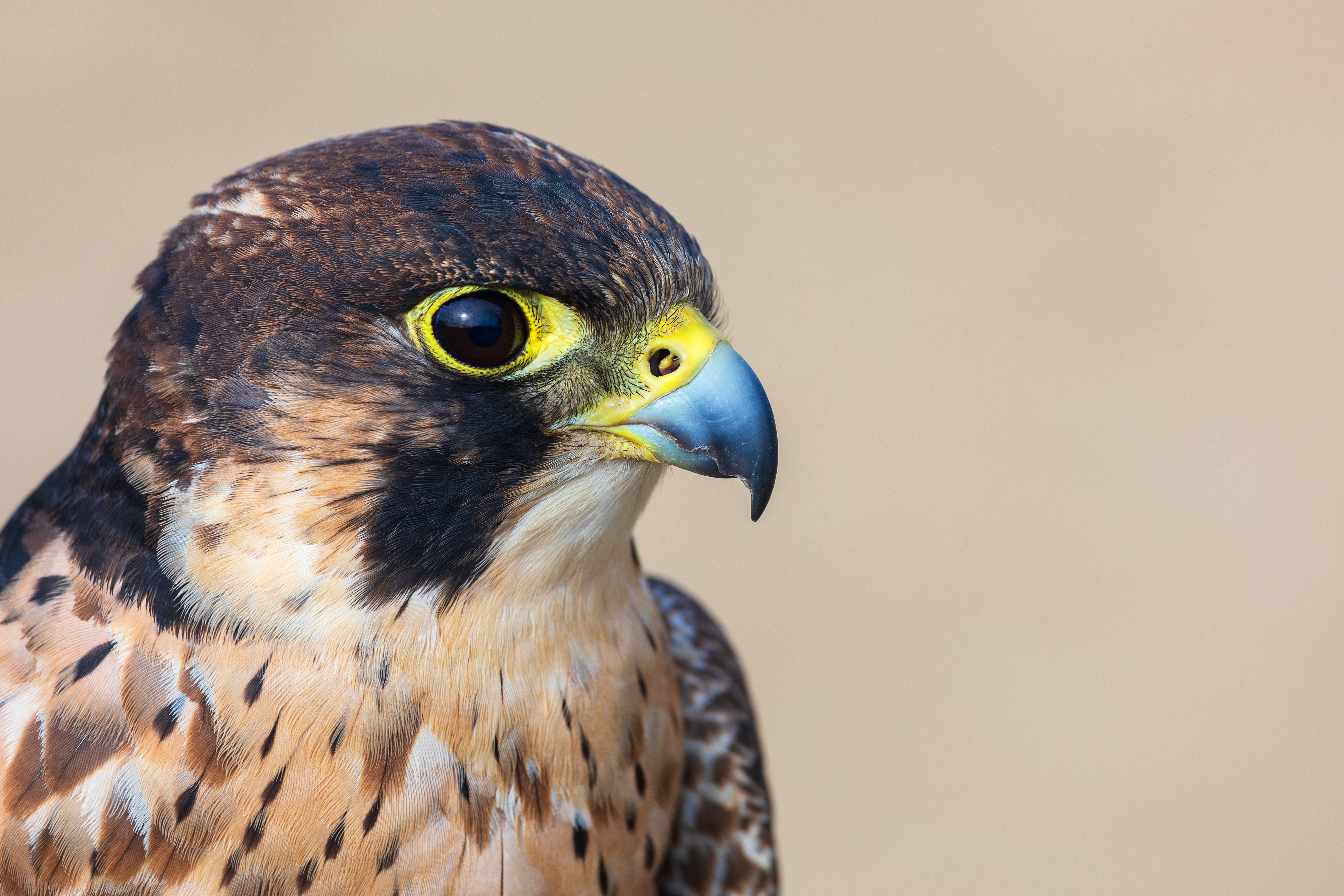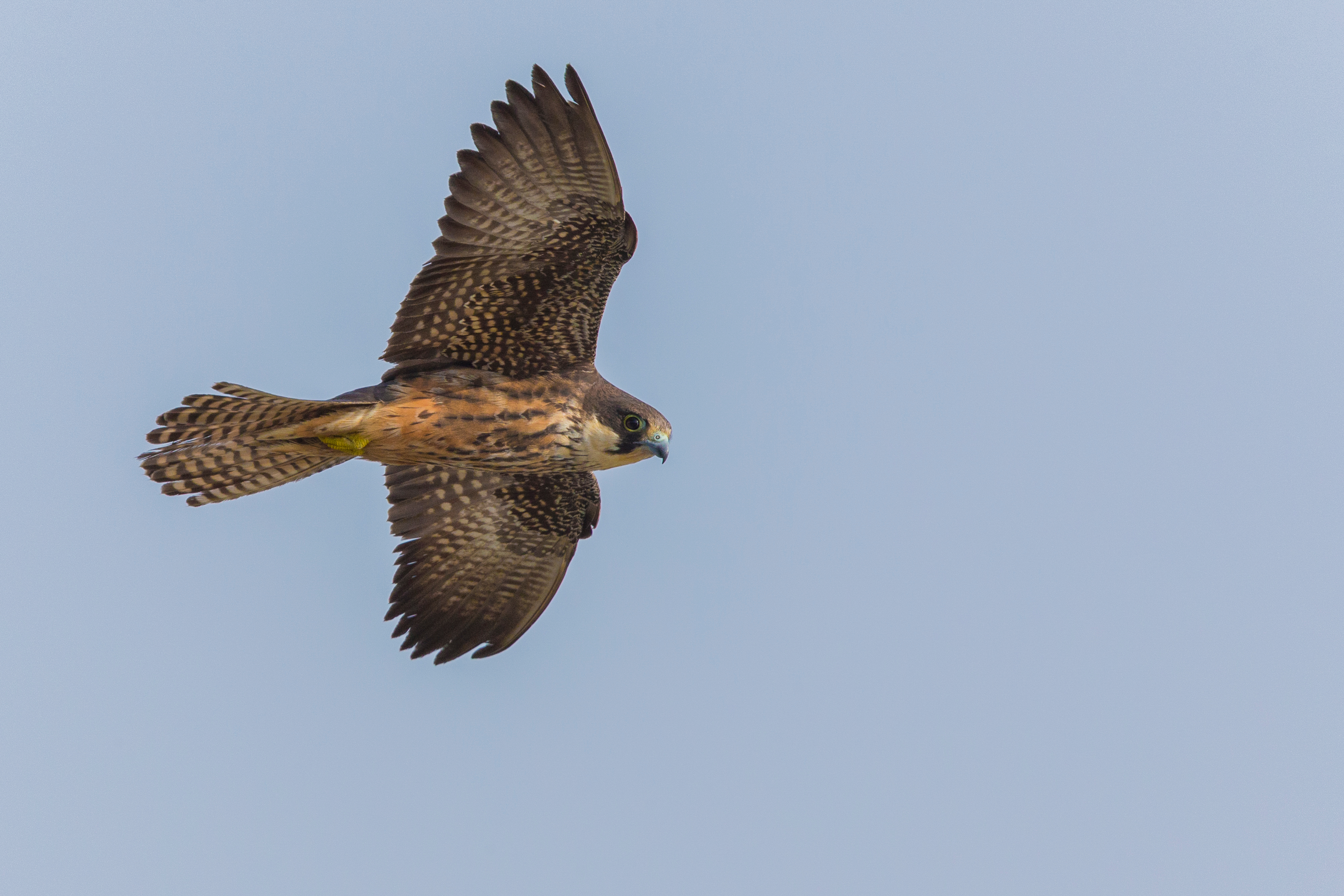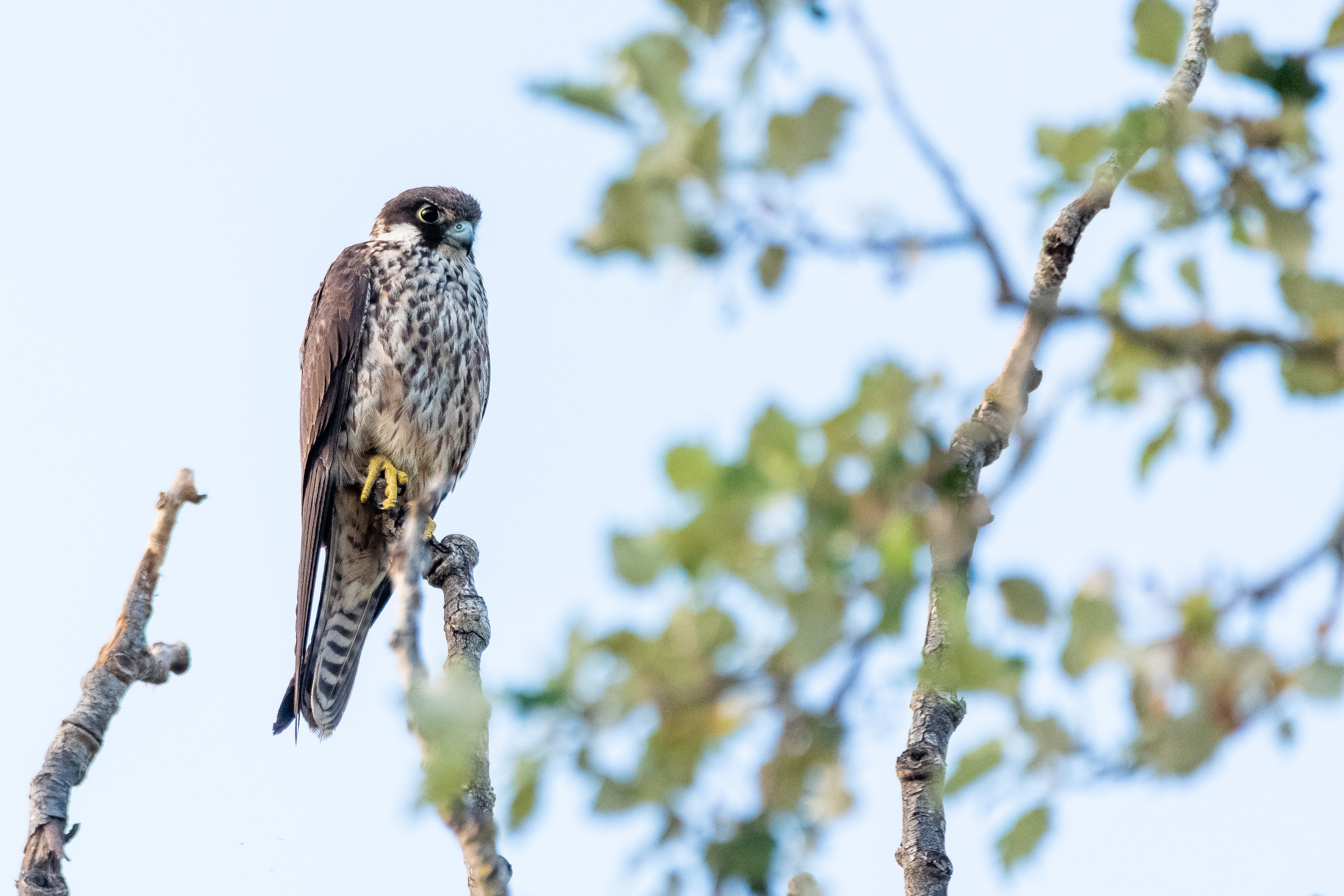Eleonora’s Falcon, the Mediterranean Raptor

By Jose Luis Gallego, environmental communicator (@ecogallego)
Of all the birds of prey that populate the vast Mediterranean region, one stands out for its beauty and the legend associated with its name: Eleonora’s falcon.
This gorgeous Falconidae, close kin of the peregrine falcon, is named after Eleonora d’Arborea, a Catalan noblewoman (in fact, the bird is called falcó de la reina, or the queen’s falcon, in Catalan) who lived in the mid-14th century. She first served as a judge and then became queen of Sardinia, where she fiercely advocated for its independence. She succeeded, turning her into a heroine for the island’s people.

Eleonora’s falcon
Besides her exceptional leadership skills, Queen Eleonora was passionate about nature. During her reign, she passed the first bird protection laws and showed a particular interest in the conservation of a beautiful falcon species that arrived on the island every spring to breed along its rocky coastline. The raptor fascinated her.
It is worth remembering that during the Middle Ages, falcons were highly prized possessions among the nobility. Falconry, or hunting with birds of prey, was a popular sport, and nobles competed against one another. The species of Falconidae that so enchanted Eleonora was not scientifically identified until the mid-19th century when it received the scientific name Falco eleonorae in honour of the nature-loving queen.
In terms of biological attributes and appearance, Eleonora’s falcon is the marine cousin of the peregrine falcon (Falco peregrinus) with which it shares several physical traits. Eleonora’s falcon also resembles the Eurasian hobby (Falco subbuteo), although it does have a few distinctive features that set it apart from its two relatives.
For starters, Eleonora’s falcon is somewhat taller and slimmer than the peregrine and much larger than the hobby. It has a much darker and mottled chest with rufous colouration. The plumage on the back is an elegant shade of slate black, much like the head and the black moustache-like bar extending from the eye down the side of the throat. The wings and tail are very long and narrow. Unlike the peregrine, Eleonora’s falcons have greenish, not yellow, feet. There is also a dark variant which is even easier to distinguish from its relatives. The species grows to a length of about 40 centimetres and has a wingspan of almost a metre.
Few birds of prey have mastered flight quite as impressively as Eleonora’s falcon. The raptor is capable of catching swallows, swifts, and other aerial acrobats in mid-flight thanks to its wing design and fan-like tail, allowing the bird to dive and turn somersaults in the air. Eleonora’s falcon prefers to hunt at dusk but given its extremely acute vision – among the best in the bird world – it can do so until nightfall.

Eleonora’s falcon in flight
What sets this falcon apart from other raptors is its exclusive preference for coastal areas, where it lives on seaside cliffs and isolated islets. During the summer, we might occasionally spot one in open fields or wetlands near the coast, but the falcon always returns to its perch above the sea. In Spain, the falcon’s nesting grounds are limited to very specific areas on the Balearic Islands, especially Mallorca and Ibiza, and the Columbretes.
Eleonora’s falcons have adapted their diet to the migration of their favourite prey: migratory birds. In late summer and coinciding with the post-mating journey of these species, Eleonora’s falcons almost exclusively hunt other birds. By contrast, in the spring, they are essentially insectivores, feeding on locusts, dragonflies, large butterflies and moths.
Although some of these falcons may occasionally nest alone, they generally build small colonies along the rocky cliffs. During the mating season, pairs of falcons will engage in aerial displays which often include steep spectacular dives above the sea. The female stays in the nest and incubates the eggs while the male hunts for both. Once the chicks have hatched, they are fed by both parents.

Eleonora’s falcon perched on a branch
In terms of their phenology, or the way in which they relate to seasonal changes, Eleonora’s falcons arrive on Mediterranean shores in late March, but do not begin breeding until the middle of July – the latest breeding season of any Iberian raptor. The reason for this delay takes us back to the migratory birds mentioned earlier: the falcons time their breeding to coincide with the autumnal migration of their prey, ensuring that there is plenty of food for adult and fledgling birds alike. In November, they return to their wintering grounds in Africa.
